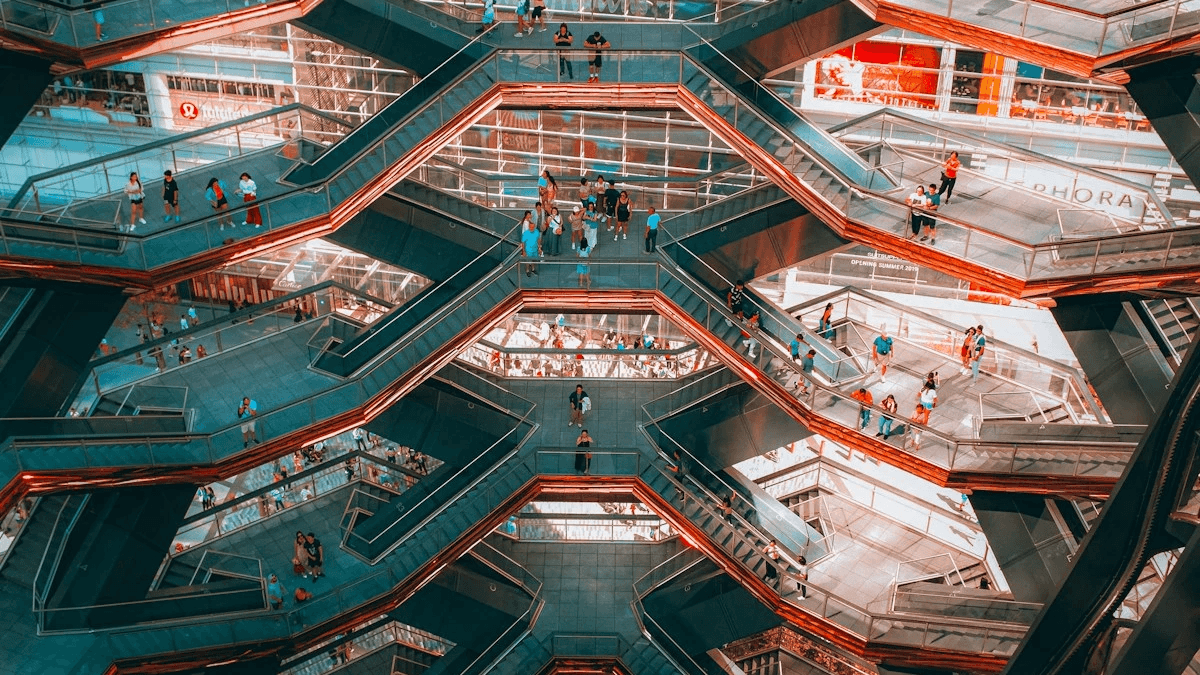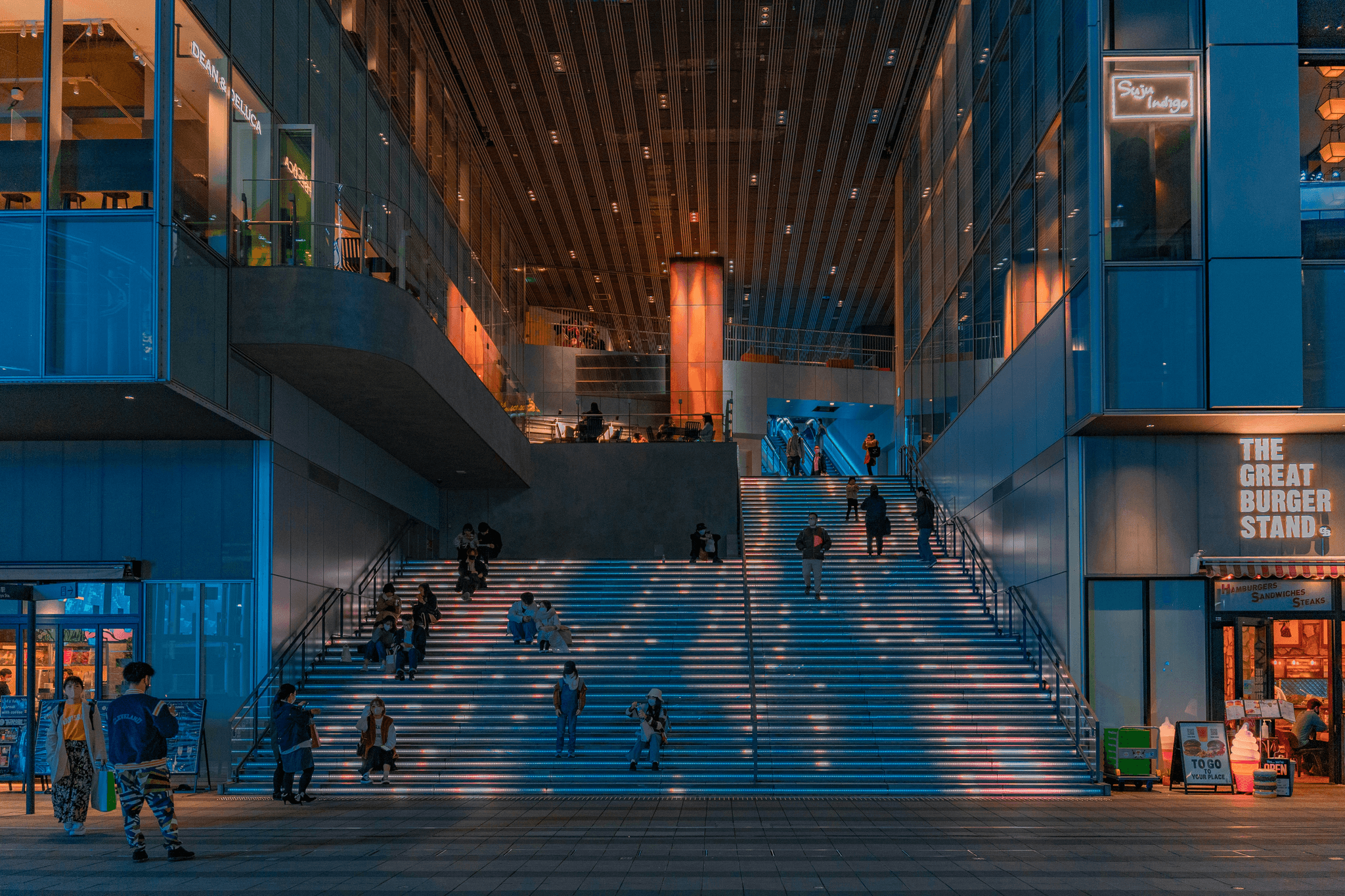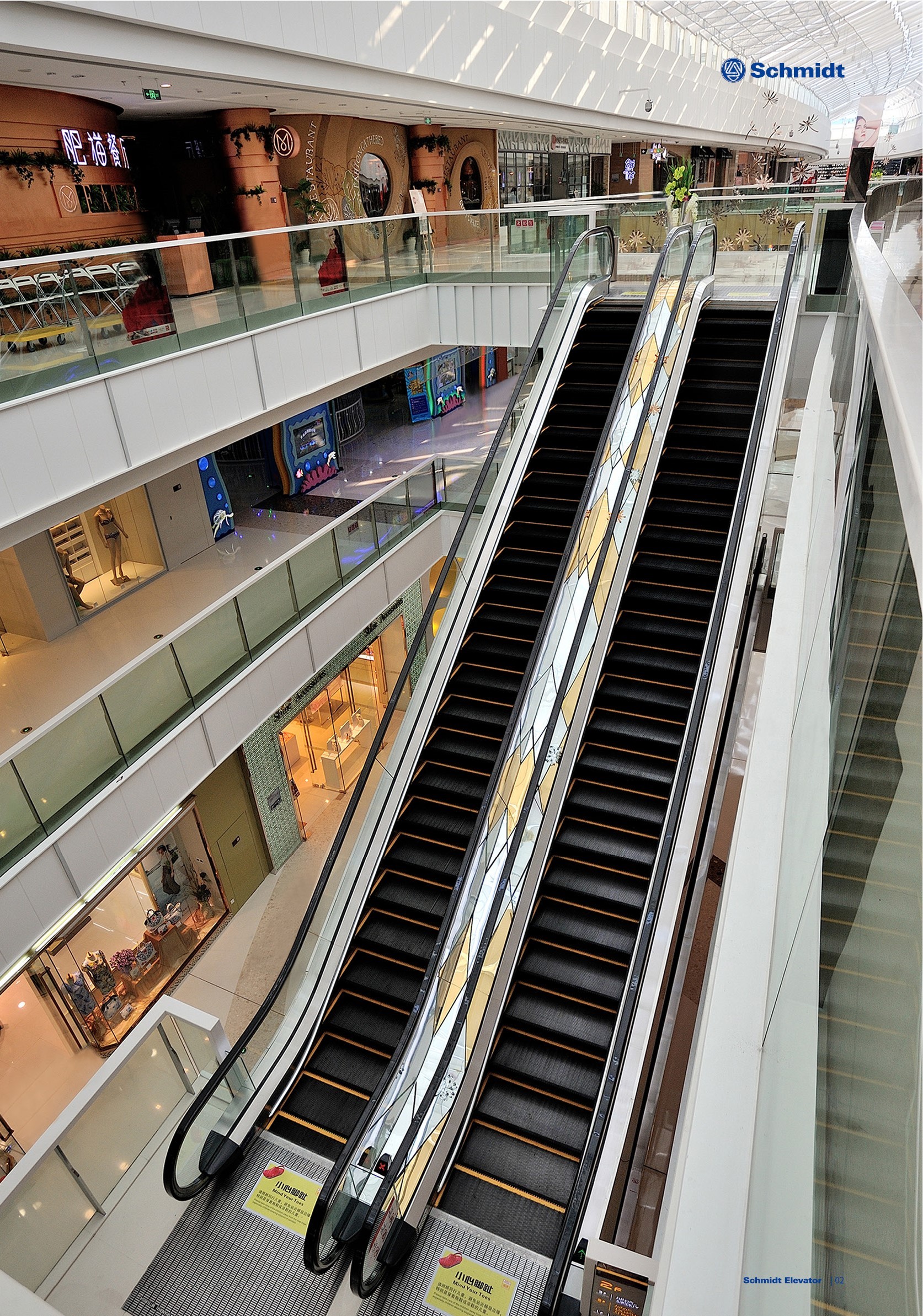Introduction

Understanding Elevators and Escalators
Elevators, often referred to as mall lifts, are enclosed compartments designed for vertical transportation between floors. In contrast, escalators are inclined moving walkways that facilitate a continuous flow of foot traffic without the need for waiting or stopping. Understanding these differences helps shoppers decide which option suits their needs—whether they prefer the convenience of an elevator compartment or the swift movement offered by escalator lifts.
Reasons for Choosing Between Them
Several factors influence whether shoppers opt for a mall elevator or an escalator in mall environments. For instance, individuals with mobility challenges may find elevators more accessible due to their enclosed design and spacious cabins. Conversely, those looking for a quicker ascent might choose escalators; after all, who doesn’t love that effortless glide up to their favorite store?
The Impact of Mobility Solutions in Malls
The presence of effective mobility solutions like elevators and escalators significantly enhances the shopping experience in malls. Not only do they facilitate easy access across multiple levels, but they also contribute to overall shopper satisfaction by reducing wait times and improving flow within crowded spaces. Ultimately, these systems play a pivotal role in creating an inviting atmosphere where everyone can enjoy their shopping experience without hassle.
What is a Mall Lift Called?

When it comes to navigating the vertical expanse of shopping malls, the term mall lift often stirs up some confusion. Commonly referred to as a mall elevator, this essential mobility solution is designed to transport shoppers between different levels of a mall with ease and efficiency. But what exactly defines a mall elevator?
Defining the Mall Elevator
A mall elevator is more than just a box that moves up and down—it's an integral part of the shopping experience, designed specifically for high-traffic environments like malls. Unlike standard elevators found in office buildings or residential complexes, mall elevators are built to accommodate larger groups of people and often feature glass walls for aesthetic appeal. This design not only enhances visibility but also adds an element of excitement as shoppers travel between floors.
Variations in Design and Function
Mall elevators come in various designs tailored to meet different needs and preferences, making them quite versatile in their functionality. Some may prioritize speed for those eager shoppers on the go, while others might focus on spacious interiors that can hold bulky items or large groups—think about all those shopping bags! Additionally, there are specialized models like freight elevators designed specifically for transporting goods within the mall itself, showcasing just how multifaceted these lifts can be.
The Role of Schmidt Elevator Co., Ltd.
In the world of vertical transportation solutions, Schmidt Elevator Co., Ltd. stands out as a key player in providing innovative and reliable mall elevator systems. With years of experience under their belt, they offer cutting-edge technology that enhances both safety and efficiency in malls worldwide. Their commitment to quality ensures that each mall lift not only meets but exceeds industry standards, creating seamless experiences for shoppers navigating their favorite retail spaces.
What is an Elevator and Escalator?

When we delve into the world of vertical transportation, two key players come to mind: the elevator and the escalator. Both serve the essential purpose of moving people between different levels in a building, particularly in bustling environments like shopping malls. However, understanding their distinct functionalities can help shoppers make informed choices when navigating their favorite retail spaces.
Comparing Basic Functions
At first glance, a mall elevator and an escalator lift might seem interchangeable, but they serve different functions. An elevator is designed to transport individuals or groups vertically between floors in a fully enclosed compartment, making it ideal for those with mobility challenges or for transporting larger items like shopping bags. On the other hand, escalators provide a continuous moving staircase that allows people to ascend or descend while standing, offering convenience for quick trips between levels without needing to wait.
Both options are integral components of modern malls; however, they cater to different needs. For instance, when someone asks, What is a mall lift called? it’s important to clarify that while both elevators and escalators fit this description in broad terms, they fulfill unique roles within the shopping experience. Elevators are often used for heavier loads or accessibility needs while escalators provide rapid movement for foot traffic.
Technical Differences Explained
When we look at technical specifications, elevators and escalators have some notable differences that affect their design and operation. Elevators utilize a system of pulleys and cables (or hydraulic systems) to move their compartments vertically within shafts that can be quite elaborate depending on the building's height. Conversely, an escalator consists of a looped belt of stairs driven by motors at both ends; this makes them easier to install in many configurations but limits them primarily to shorter distances.
Additionally, safety features vary significantly between these two systems as well. The elevator compartment is equipped with doors that prevent access until it has properly arrived at its destination while also including various emergency protocols such as alarm buttons and communication systems inside the cabin itself—essentially ensuring peace of mind during transit. Escalators may include safety sensors that stop movement if something obstructs their path but lack enclosed cabins which means riders must exercise caution.
Usage Statistics in Shopping Malls
In shopping malls across the globe, usage statistics reveal interesting trends about how shoppers prefer to navigate multi-level spaces. Studies indicate that while elevators might see less frequent use overall compared to escalators due to their slower pace and need for more space per trip—often serving only one group at a time—they play an essential role during peak hours or when accommodating families with strollers or individuals using wheelchairs.
Interestingly enough, data shows that escalator lifts tend to dominate foot traffic patterns; they are often preferred by those looking for quick access between floors without waiting times associated with elevators—especially during busy weekends or holiday sales events when every second counts! Additionally, signage indicating “What are the stairs in the mall called?” often leads visitors toward these efficient moving staircases instead of waiting around for an elevator.
Overall usage statistics highlight not only preferences among shoppers but also emphasize how vital both elevators and escalators are within mall infrastructure—a dynamic duo working together seamlessly behind the scenes!
What Are the Stairs in the Mall Called?

When wandering through a mall, you might often overlook one of the most fundamental features: the stairs. Commonly referred to simply as stairs, they serve an essential role in connecting different levels of retail space efficiently. While elevators and escalators are often highlighted for their convenience, stairs provide a reliable and straightforward means of mobility that shouldn't be underestimated.
The Role of Mall Stairs
Mall stairs play a vital role in enhancing shopper experience by offering direct access between floors without waiting for an elevator or escalator lift. They encourage physical activity, promoting health and fitness among shoppers who choose to take the stairs instead of relying solely on mechanical options like the mall elevator or escalator in mall settings. Furthermore, stairs can act as social spaces where shoppers pause to chat, rest, or simply enjoy their surroundings.
How Stairs Complement Elevators and Escalators
While escalators and elevators facilitate smooth vertical transport within malls, stairs complement these mobility solutions by providing an alternative that is often quicker for short distances. For instance, if you're on the first floor and need to dash up just one level to grab a quick coffee, taking the stairs is typically faster than waiting for an elevator or even riding up an escalator lift. This synergy between different modes of transport—stairs, elevators, and escalators—ensures that all shoppers can navigate malls according to their preferences.
Accessibility Considerations
Accessibility is paramount when discussing mall infrastructure; thus, it's essential for stair designs to accommodate everyone. While some may find navigating stairs easy-peasy, others may require assistance from elevators or escalators due to mobility challenges. Malls today are increasingly designed with accessibility in mind—offering wide staircases equipped with handrails alongside strategically placed elevators and escalator lifts—to ensure that all shoppers feel welcome.
Analyzing the Escalator in the Mall

When it comes to vertical transport in shopping malls, the escalator plays a pivotal role alongside mall elevators. Often referred to as an escalator lift, this moving staircase provides a seamless transition between different levels of a mall, making it an essential feature for shoppers. Understanding the benefits and designs of escalators can enhance our appreciation for these mechanical marvels.
Benefits of Escalator Lifts
Escalator lifts offer several advantages that make them a popular choice in malls. First and foremost, they facilitate smooth and continuous movement between floors, allowing shoppers to navigate large spaces effortlessly. Unlike traditional mall elevators that require waiting times, escalators keep the flow moving, ensuring that foot traffic remains steady and reducing congestion.
Moreover, escalators are particularly beneficial for those who may find stairs challenging but do not require the full functionality of a mall elevator. For families with strollers or individuals carrying heavy shopping bags, escalators provide an easy alternative to what are often long flights of stairs in malls. This convenience contributes significantly to enhancing overall shopper experience while promoting accessibility.
Popular Escalator Designs
There’s no shortage of creativity when it comes to popular escalator designs found within malls! From sleek modern styles that blend seamlessly into contemporary architecture to more ornate versions featuring intricate railings and lighting effects, these structures can be visually stunning additions to any shopping environment. Unique design elements not only enhance aesthetics but also improve functionality by accommodating varying foot traffic levels.
Some malls even incorporate double-decker escalators or spiral configurations that add an element of excitement while transporting shoppers from one floor to another. These innovative designs maximize space usage and create engaging pathways through retail environments—turning what could be mundane transitions into memorable experiences! The beauty lies not just in their function but also in how they complement other features like mall elevators.
Schmidt's Innovations in Escalator Technology
Schmidt Elevator Co., Ltd., known for its commitment to quality and innovation, has made significant strides in escalator technology that enhances both safety and user experience within malls. Their advancements focus on energy efficiency without compromising performance—an essential factor as sustainability becomes increasingly important in modern architecture.
Additionally, Schmidt's innovations include smart sensors designed to detect crowd density on escalators; this allows them to adjust speed accordingly or signal when additional assistance is needed from nearby mall elevators or staff members. Such features ensure optimal operation under varying conditions while prioritizing shopper safety—a vital aspect given the bustling nature of retail environments.
Overall, understanding these elements surrounding the escalator lift provides valuable insights into its integral role within shopping malls today!
What is the Elevator Compartment Called?

When navigating through a mall, one often wonders about the various components that make up the experience of vertical transport. Among these components, the elevator compartment, commonly referred to as an elevator cabin, plays a crucial role in ensuring smooth and efficient movement between floors. Understanding what this compartment entails can enhance our appreciation for the intricate design and functionality of mall elevators.
Understanding Elevator Cabins
Elevator cabins are enclosed spaces designed to carry passengers safely and comfortably from one level to another within a shopping mall. These compartments are typically equipped with buttons that allow users to select their desired floor easily, making them essential for those who prefer not to use stairs or escalators in malls. Moreover, modern mall elevators often feature spacious cabins that can accommodate multiple shoppers along with their bags and strollers.
The design of an elevator cabin is not just about space; it also involves safety features like emergency alarms and intercom systems for added security during transit. The materials used in constructing these cabins range from stainless steel to glass, providing both durability and aesthetic appeal. This attention to detail ensures that every ride in a mall elevator is both safe and enjoyable.
Aesthetics and Functionality
A well-designed elevator cabin must balance aesthetics with functionality—after all, first impressions count! Many malls invest in visually appealing elevator interiors that match their overall theme or branding while still providing practical elements like handrails and non-slip flooring. This combination enhances the user experience by making each ride feel luxurious without compromising safety.
Furthermore, the choice of lighting within an elevator cabin can set the mood for shoppers as they transition between different areas of the mall. Bright lights can energize passengers while softer lighting creates a more relaxed atmosphere—perfect after a long day of shopping! Ultimately, thoughtful design choices contribute significantly to how shoppers perceive their journey through the mall.
Safety Features in Mall Elevators
These include overload sensors that prevent operation if too many people enter at once—a common occurrence during busy shopping seasons! Additionally, modern elevators are fitted with emergency brakes that engage if there’s a malfunction or system failure.
Another critical aspect involves regular maintenance checks conducted by companies such as Schmidt Elevator Co., Ltd., ensuring all safety mechanisms function correctly at all times. Passengers can also find clear signage inside each cabin outlining emergency procedures should they need assistance during their journey—a reassuring presence for anyone concerned about safety while using an escalator lift or traditional elevator in malls.
Conclusion
In the grand debate of which is better—elevator or escalator—it often boils down to the context and needs of the shoppers. Elevators, or as some may ask, What is a mall lift called? are perfect for transporting larger groups or those with mobility challenges between floors. On the other hand, escalators provide a continuous flow of movement, ideal for quick trips between levels without waiting for an elevator compartment.
Which is Better: Elevator or Escalator?
When considering What is an elevator and escalator? it’s essential to weigh their functions against user needs. Elevators offer enclosed spaces that can carry more people and goods, while escalators in malls facilitate swift transitions with minimal wait times. Ultimately, the choice depends on factors such as foot traffic volume, space constraints, and accessibility requirements.
Accessibility for All Shoppers
Accessibility remains a crucial consideration in modern mall design; hence understanding What are the stairs in the mall called? becomes vital for inclusive planning. While stairs offer a straightforward way to move between levels, they must complement elevators and escalators to cater to all shoppers effectively. Ensuring that every shopper has access—whether through an escalator lift or a mall elevator—promotes a welcoming environment where everyone can enjoy their shopping experience.
The Future of Vertical Transport in Malls
Looking ahead, innovations in vertical transport will redefine how we navigate malls; it's exciting to ponder what advancements lie beyond our current understanding of what constitutes an elevator compartment or an escalator in a mall. Technology will likely enhance both elevators and escalators with smart features that improve efficiency and user experience. As we embrace these changes, one thing remains clear: both elevators and escalators will continue to play pivotal roles in shaping accessible shopping environments.

